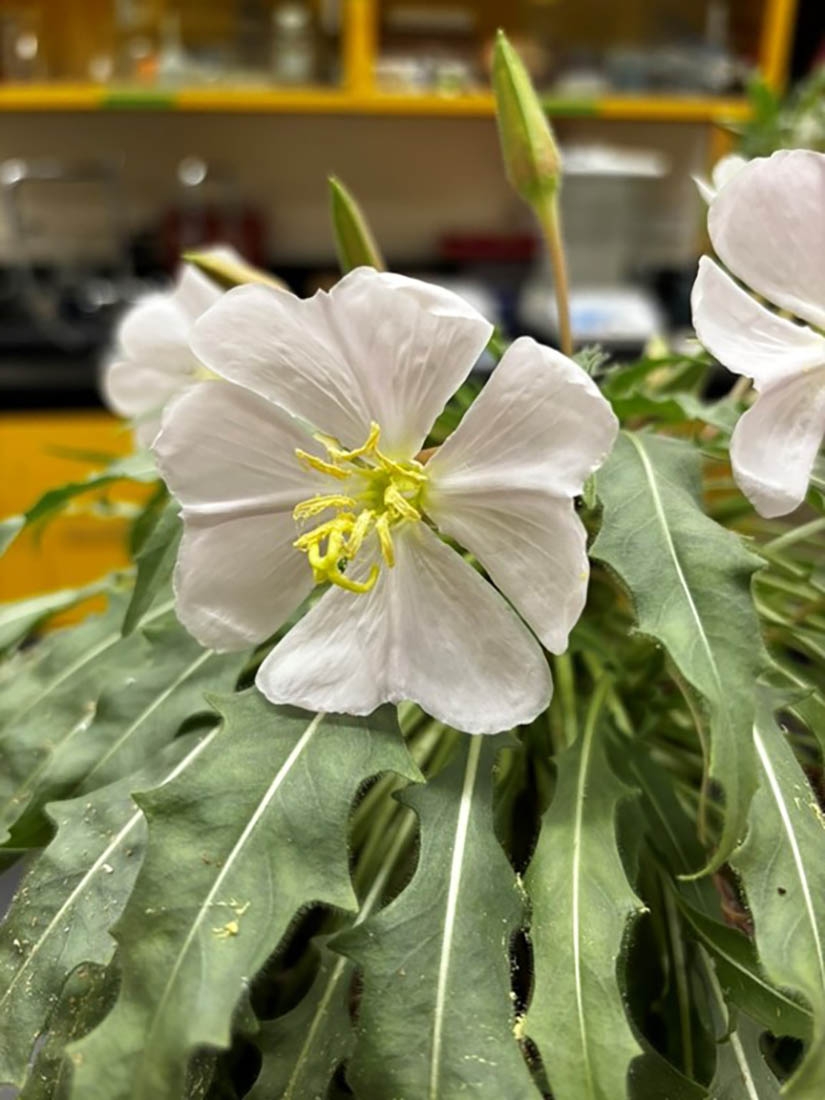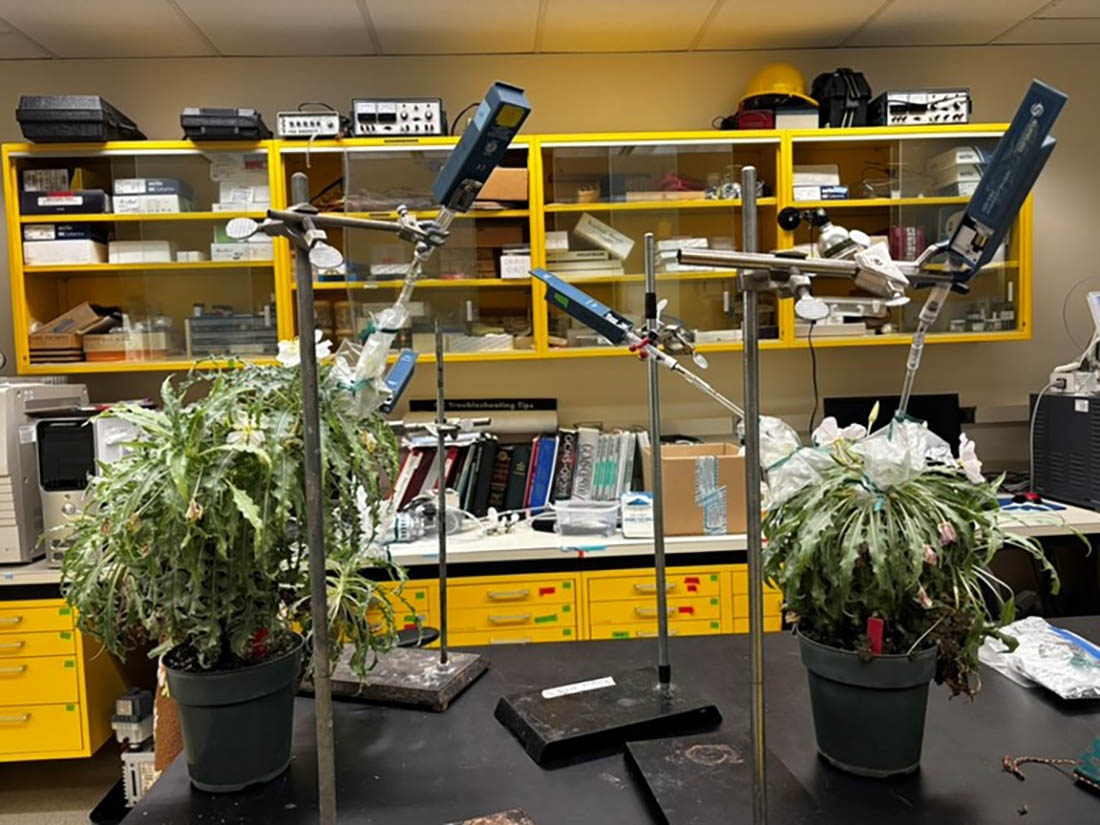Stop and smell the flowers - for science!
From sweet and floral to skunky and funky scents, the fragrance of a flower is unique. Certain floral scents are hypothesized to attract pollinators, defend against herbivores or act as a mode of communication between plants. Describing a plant as sweet or skunky is a great start, but with the right training and tools, botanists can more deeply understand the exact chemical reasons as to why a plant smells the way it does.
Many botanists are passionate about understanding the biochemistry responsible for plant aromatics and incorporating it into their research, like me! This past month, I took a trip to Cornell University to train with floral scent expert Robert Raguso. Using the Arkansas Valley evening-primrose (Oenothera harringtonii) from the greenhouse, we practiced collecting the floral scent. To do so we needed four elements: a plant of interest, a headspace, an air pump and a method of capture. Together, these tools allow us to concentrate molecules and then move them into our method of capture to take back to the lab. If done carefully and correctly, this data collection can be done without causing any harm to the plant of interest.
Once back in the lab, we inject our floral scent cocktail into a machine called a gas chromatography-mass spectrometer (GC-MS), a tool which separates and breaks down samples to identify substances and determine their chemical structures and quantities. These are highly specialized instruments capable of determining even the most cryptic of compounds. After injection, the floral compounds travel through a glass column, by force of an inert gas. Inside this column, compounds are separated from one another. As the isolated compounds exit the other end of the column, they are ionized by a laser beam where their mass to charge ratio (m/z) is determined. We are left with both a chromatogram and a mass spectrum; software is then used to determine which compounds are present in our sample.
In the case of Oenothera harringtonii, we identified several dominant compounds, particularly a compound called linalool. Linalool, an acyclic monoterpene tertiary alcohol, is known to manifest as a woody, floral scent in several notable plant genera, such as Coriandrum (known for coriander and cilantro) and Lavandula (known for lavender). Oenothera harringtonii is a night-blooming angiosperm that requires the visitation of hawkmoths for successful pollination. Linalool is observed to attract moth visitors, while simultaneously being a deterrent of other herbivorous invertebrates.
Whether studying the delicate emissions of alpine wildflowers or analyzing the complex aromatics of cultivated blooms, each volatile molecule we identify tells a worthwhile chemical story.
Special thanks to Robert Raguso and Cornell University for taking the time to share their knowledge about floral biochemistry. Learn more about Professor Raguso’s work.
This article was contributed by graduate student Ashlee Kerber.
Gallery



Add new comment